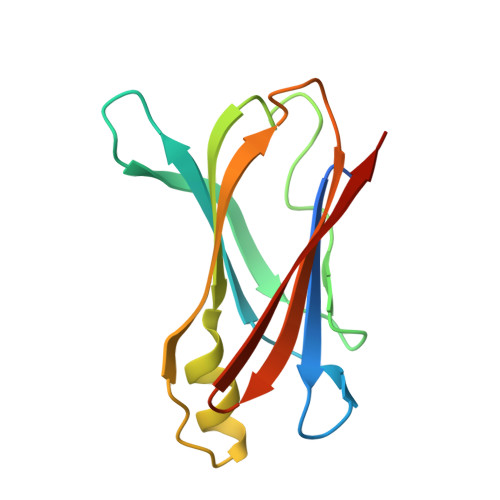Trapping of palindromic ligands within native transthyretin prevents amyloid formation.
Kolstoe, S.E., Mangione, P.P., Bellotti, V., Taylor, G.W., Tennent, G.A., Deroo, S., Morrison, A.J., Cobb, A.J., Coyne, A., McCammon, M.G., Warner, T.D., Mitchell, J., Gill, R., Smith, M.D., Ley, S.V., Robinson, C.V., Wood, S.P., Pepys, M.B.(2010) Proc Natl Acad Sci U S A 107: 20483-20488
- PubMed: 21059958
- DOI: https://doi.org/10.1073/pnas.1008255107
- Primary Citation of Related Structures:
3IPB, 3IPE, 3M1O - PubMed Abstract:
Transthyretin (TTR) amyloidosis is a fatal disease for which new therapeutic approaches are urgently needed. We have designed two palindromic ligands, 2,2'-(4,4'-(heptane-1,7-diylbis(oxy))bis(3,5-dichloro-4,1-phenylene)) bis(azanediyl)dibenzoic acid (mds84) and 2,2'-(4,4'-(undecane-1,11-diylbis(oxy))bis(3,5-dichloro-4,1-phenylene)) bis(azanediyl)dibenzoic acid (4ajm15), that are rapidly bound by native wild-type TTR in whole serum and even more avidly by amyloidogenic TTR variants. One to one stoichiometry, demonstrable in solution and by MS, was confirmed by X-ray crystallographic analysis showing simultaneous occupation of both T4 binding sites in each tetrameric TTR molecule by the pair of ligand head groups. Ligand binding by native TTR was irreversible under physiological conditions, and it stabilized the tetrameric assembly and inhibited amyloidogenic aggregation more potently than other known ligands. These superstabilizers are orally bioavailable and exhibit low inhibitory activity against cyclooxygenase (COX). They offer a promising platform for development of drugs to treat and prevent TTR amyloidosis.
Organizational Affiliation:
Centre for Amyloidosis and Acute Phase Proteins, Division of Medicine, Royal Free Campus, University College London Medical School, London NW3 2PF, United Kingdom.















